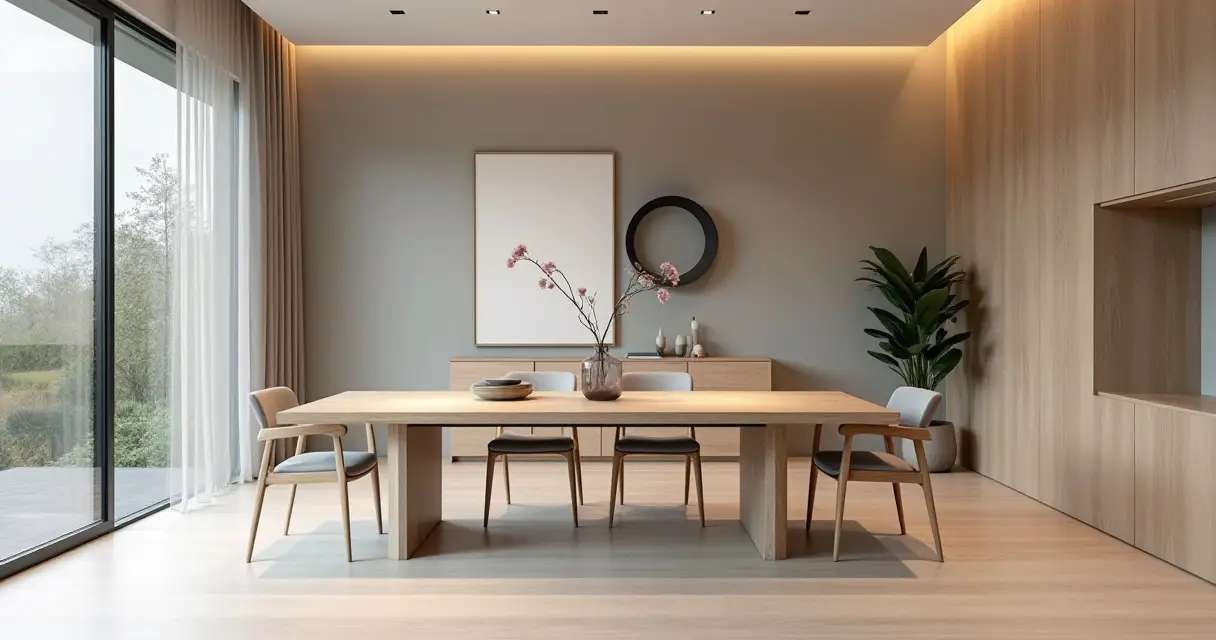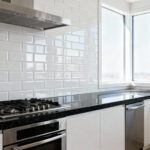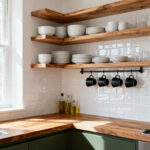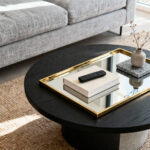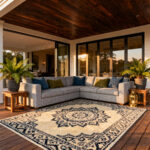Picture this: You’re standing in your dining room. Or maybe it’s a “dining area.” Right now, it might be a sad collection of hand-me-down furniture, or worse, the official dumping ground for mail, half-finished projects, and that thing you swore you were going to return last month. It’s a room with a purpose you’ve forgotten.
If that sounds familiar, you’re in the right place. You know what people always ask me? Paula, how do I make my dining room look like the ones on Pinterest without spending a fortune or living in a museum?” They want it to be beautiful, but they also want to live in it.
After years as an art teacher, I learned one thing: creativity thrives on limits. A tight budget or a small space isn’t a problem; it’s a creative starting point. We’re going to walk through this, step-by-step, and turn that forgotten space into the heart of your home. Forget the corporate-speak and complicated design rules. This is just you and me, figuring it out.
Laying the Modern Foundation: Planning & Core Principles
Before you even think about opening a shopping app, we have to do the groundwork. I know, I know, it’s the boring part, but I promise it’s the most important. It’s like my old art students who wanted to paint a masterpiece without learning how to mix colors first. A little planning here saves you a ton of headaches (and money) later. This is where we lay out the blueprint for a room that feels intentional, not accidental.
1. Define Your Modern Aesthetic for Cohesive Design
Okay, first things first. Before you buy a single thing, you have to know what you’re aiming for. “Modern” is a huge category! Do you like the warm woods and clean lines of Mid-Century Modern? The cozy, simple feeling of Scandinavian? Or the raw, edgy vibe of Industrial? If you don’t know, you’ll end up with a room that feels like a bunch of random “on-sale” items having an awkward party.
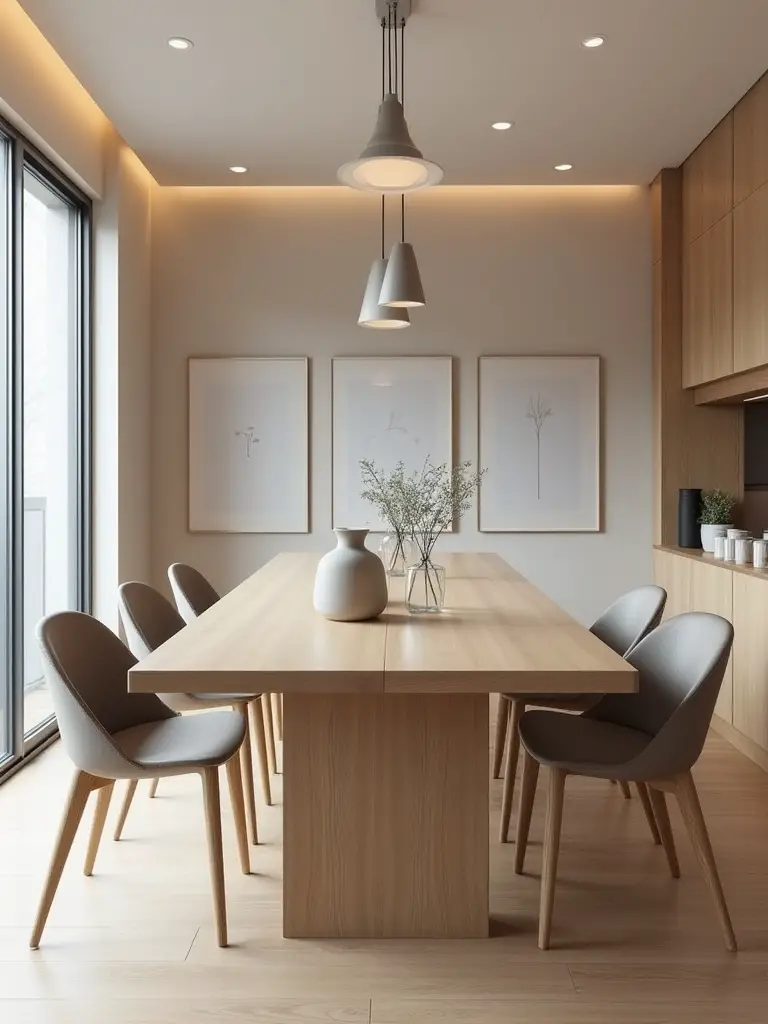
I learned this the hard way in my first apartment. I bought a rustic table, some sleek metal chairs, and a fluffy bohemian rug because I liked them all separately. Together? It was a mess. A very expensive, confusing mess. Taking just an hour to get a clear vision will stop you from making those impulse buys. Seriously, get on Pinterest and just start a board. Don’t overthink it. Pin everything you love. After 20 or 30 pins, you’ll start seeing a pattern—that’s your aesthetic.
Next up: Let’s talk about how to make your dining area work with the rest of your home, especially if you don’t have walls.
2. Optimize Open Concept Flow for Seamless Living
If your dining room flows into your kitchen or living room, this step is for you. The goal is to make it feel connected but not just one giant, chaotic space. You need to create little “zones” without putting up walls. It sounds complicated, but it’s not. The absolute easiest, can’t-mess-it-up trick is to use an area rug. It’s like drawing a line on the floor that says, “Hey, the dining room lives here.”
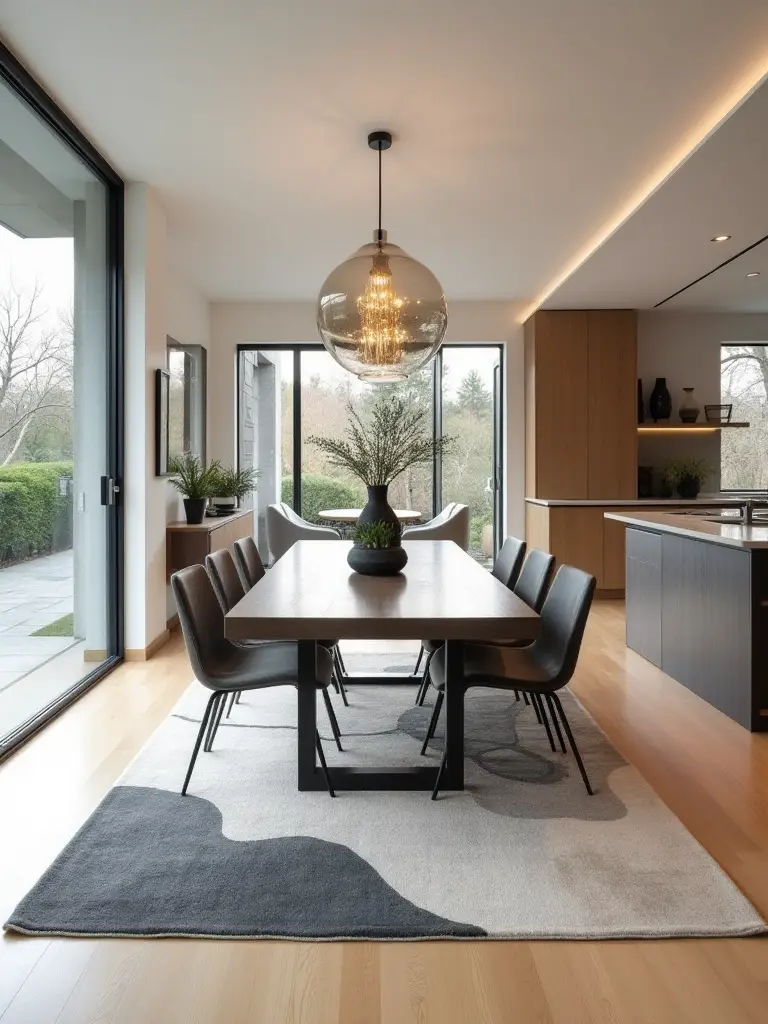
Another pro tip is to keep your color palette consistent. If your living room has cool grays and blues, don’t suddenly introduce warm yellows in the dining area. It’ll feel jarring. You want your eye to travel smoothly from one space to the next. Think of it as creating a visual pathway that guides people through your home. No one wants to feel like they’re walking through a maze of furniture.
Next up: Now that we’ve established the zones, let’s make sure the things we put in them actually work for our lives.
3. Prioritize Functionality with Sleek Design Choices
Can we talk about my biggest pet peeve? It’s when people buy incredibly beautiful but horribly uncomfortable furniture. I once had a friend who bought these stunning, super-modern acrylic dining chairs. They looked amazing. But sitting in them for more than ten minutes was pure misery. Guess what? No one ever wanted to linger after dinner at her place. Your dining room has to work for your real life.
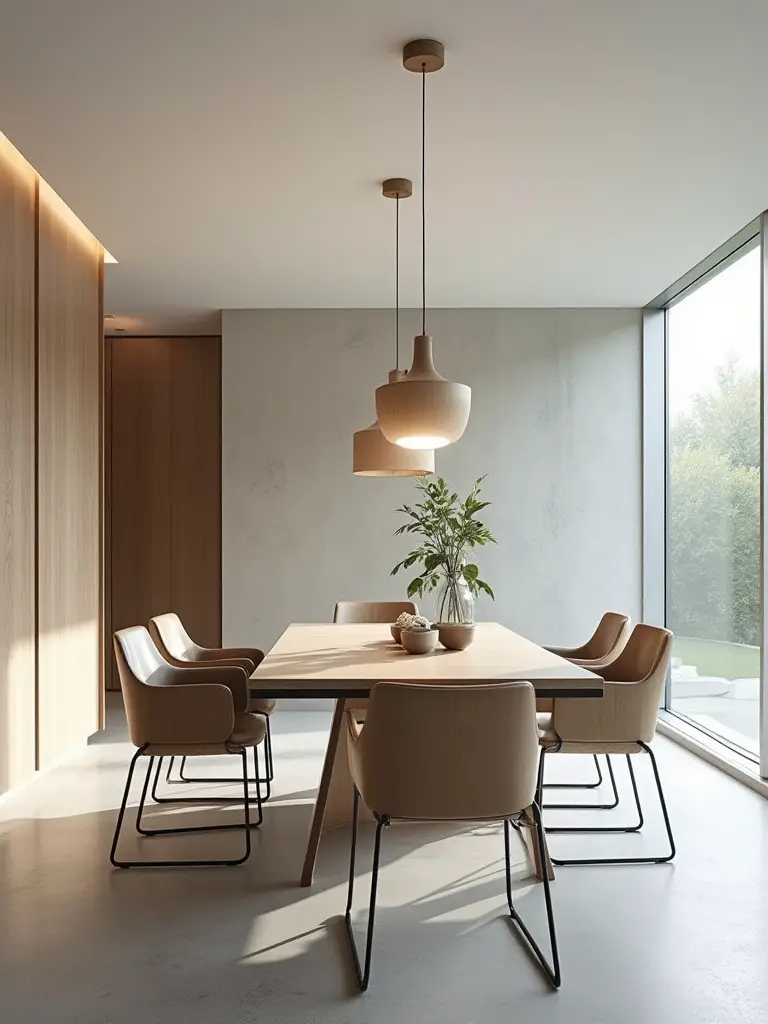
So, before you fall in love with a look, ask yourself some real questions. Do you have kids? Then a white, porous marble tabletop is probably a nightmare waiting to happen. Do you love hosting big dinners? An extendable table is your best friend. Modern design is at its best when it’s smart. It’s not just about clean lines; it’s about making life simpler and more comfortable, not just prettier. Form follows function, always.
Next up: With function in mind, we can build the perfect visual backdrop with our color choices.
4. Embrace a Neutral Base Palette for Timeless Elegance
People hear “neutral” and they think “boring.” Let’s reframe that. As an art teacher, I think of a neutral palette as the perfect canvas. It’s the calm, sophisticated backdrop that lets your amazing food, your favorite art, and your beloved friends and family be the stars of the show. Whites, creams, grays, and even soft, earthy tones are your best friends here.
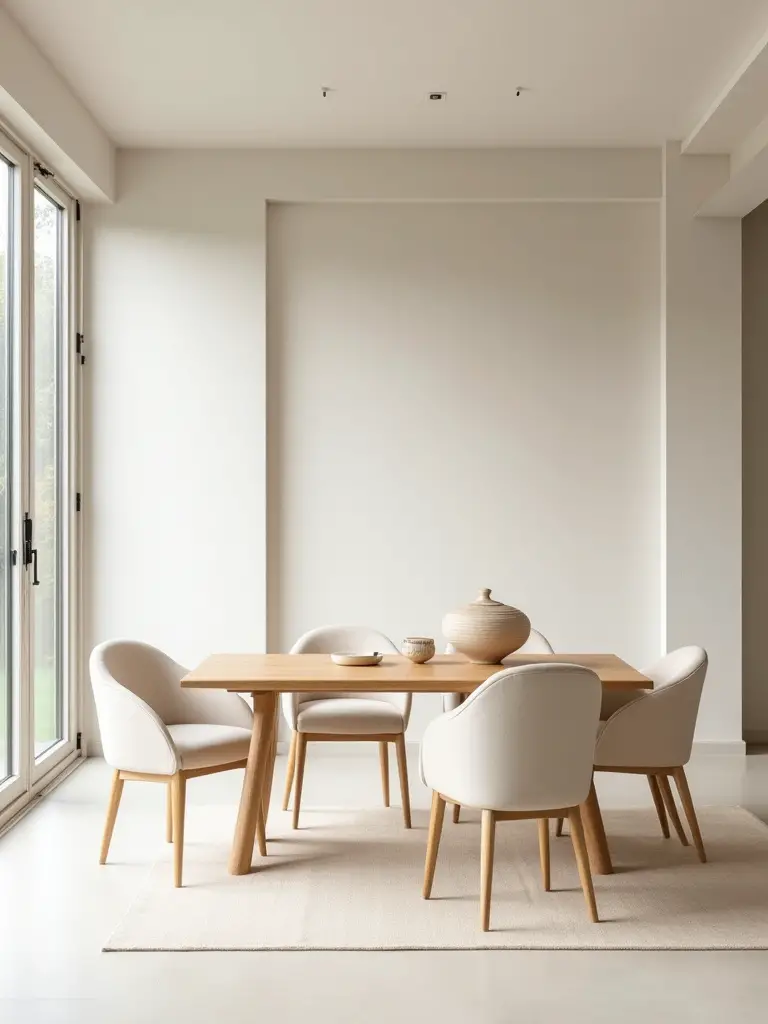
The best part? It’s a budget-saver in the long run. When you get tired of your dining room in a few years, you don’t have to repaint or buy all new furniture. You can just swap out the pillows, the centerpiece, and the art for a few pops of color, and voilà—a whole new room for under $100. Just be sure to pick a lane: either warm neutrals (like beige and cream) or cool neutrals (like gray and crisp white). Mixing them can sometimes look a little muddy.
Next up: A neutral palette looks best when it’s bathed in beautiful light, so let’s get that sorted.
5. Maximize Natural Light to Enhance Room Brightness
You don’t have to knock down walls to get more light. Most of the time, we’re just blocking the light we already have. That big, heavy bookcase next to the window? It’s eating your sunlight. Those thick, dark drapes? They’re turning your room into a cave. The biggest, cheapest trick in the book is to use a mirror. A large, simple mirror placed opposite a window will literally bounce light all around the room. It’s like adding a second window for a fraction of the cost.
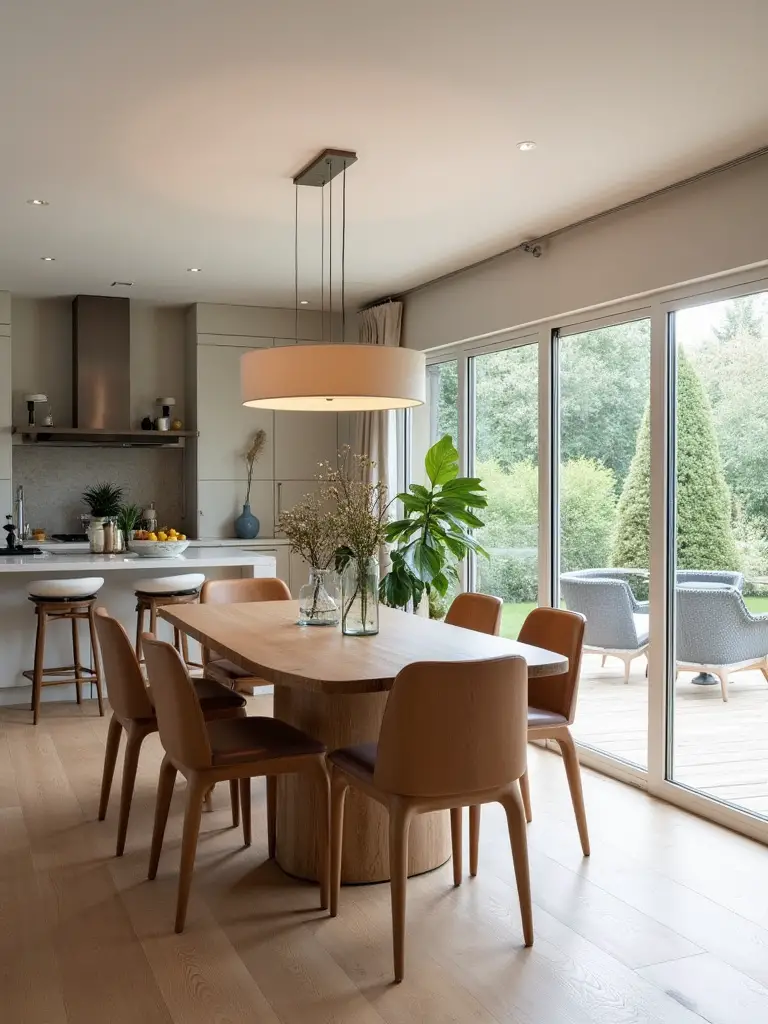
Another simple swap is your window treatments. Ditch the heavy fabrics and opt for something light and airy, like sheer linen curtains. They’ll give you privacy while still letting that beautiful, diffused daylight stream in. Light makes any space feel bigger, cleaner, and more energetic. It’s the ultimate free accessory, so use every bit of it you can get.
Essential Furniture & Optimal Layout Choices
Alright, our foundation is solid. Now comes the fun part: picking the main players. Your dining table and chairs aren’t just things to eat on; they set the entire tone for the room. This is where we’ll make a few key decisions that will make or break the space, so let’s get it right.
6. Determine the Ideal Table Shape for Optimal Space & Use
The shape of your table is more important than you think. A round table is fantastic for conversation because everyone can see and talk to each other easily. It’s also a space-saver in square rooms or tight corners because there are no sharp edges to bump into. On the other hand, a long, rectangular table is a classic for a reason—it’s perfect for hosting larger groups and filling a long, narrow room.
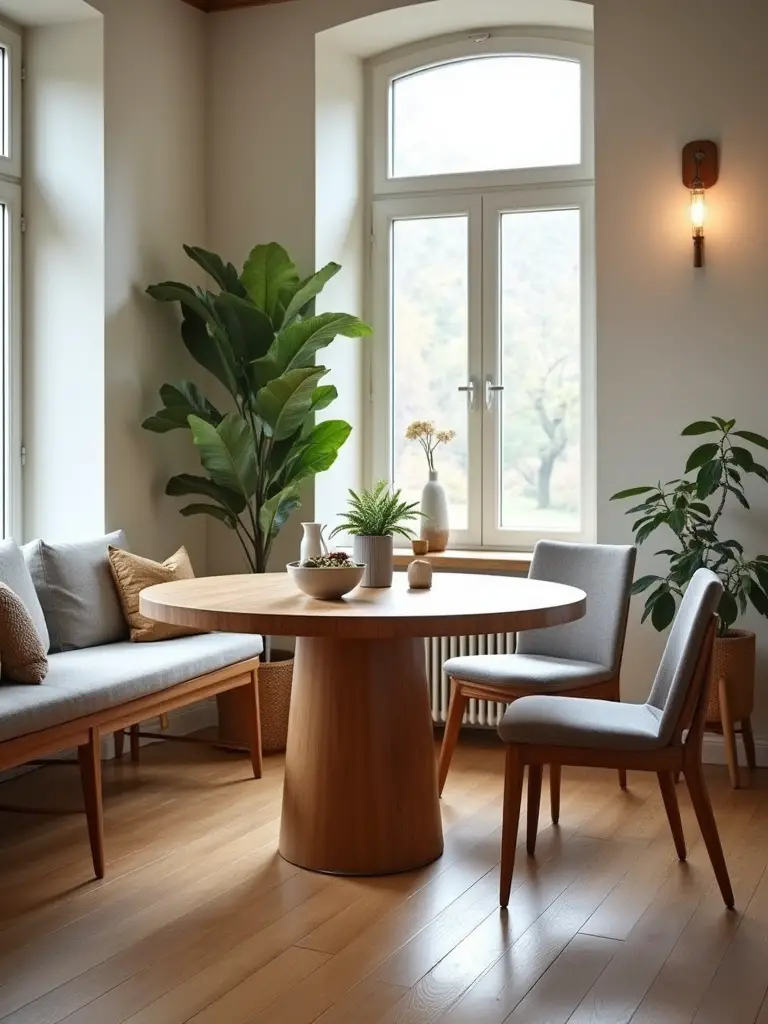
Here’s the shortcut you need: Get some painter’s tape and outline the shape and size of a potential table on your floor. Seriously, do it. Then walk around it. Pull out your current chairs and see if there’s enough room. You need at least 36 inches between the table edge and the wall for people to walk by comfortably. This five-minute trick has saved my clients from so many costly return fees.
Next up: Let’s find that perfect table that will be the star of the show.
7. Select a Statement Dining Table as Your Room’s Anchor
Your dining table is the lead actor in this play. It’s the biggest piece in the room, and it should be the anchor that everything else revolves around. This is where you can let your “aesthetic” (from step 1) really sing. If you love an industrial vibe, maybe it’s a table with a concrete top and a metal base. If you’re going for a cozy Scandinavian look, a light-colored wood table is perfect.

Don’t think a “statement” has to mean “expensive.” I found my current dining table at a flea market for $75. It had great bones but a hideous orange finish. A weekend of sanding and a few coats of a deep walnut stain, and now it looks like it cost ten times that. Check out Facebook Marketplace, thrift stores, and estate sales. The perfect anchor piece is out there waiting for a little bit of love.
Next up: Now that we have our star, let’s find the perfect supporting cast: the chairs.
8. Pair Ergonomic Chairs for Both Comfort and Modern Style
Please, I’m begging you, choose comfortable chairs. I don’t care how cool they look; if your guests are squirming after 20 minutes, you’ve failed. A good dining chair should have a supportive back and be at the right height for your table. You want to create a space where people will linger for hours over good food and even better conversation.
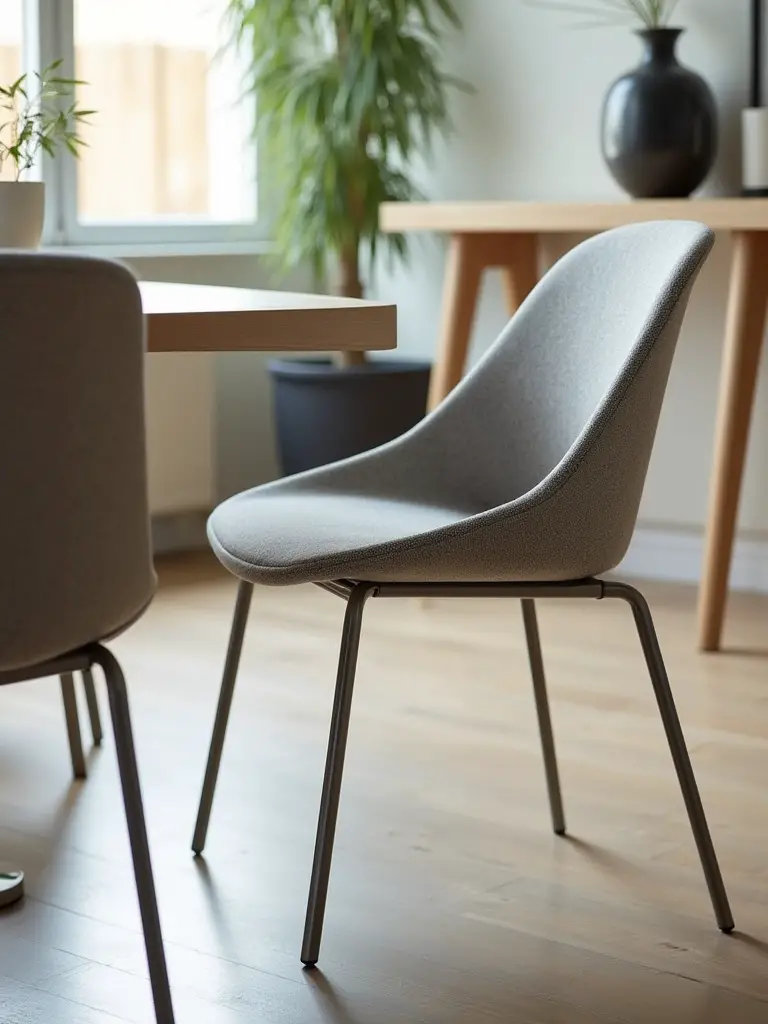
This is another time when you have to think about your real life. Upholstered chairs are lovely and comfy, but if you have toddlers with sticky fingers, maybe opt for something wipeable like molded plastic, wood, or faux leather. The best modern designs don’t force you to choose between style and comfort—they give you both. And if you’re buying online, read the reviews! People will not hold back if a chair is a torture device.
Next up: We need a place to stash all the stuff that comes with dining.
9. Integrate Smart Storage Solutions for Clutter-Free Living
Let’s be real: dining rooms attract clutter. Extra placemats, napkins, candles, serving platters… it all has to live somewhere. And if you don’t give it a home, it will live on your beautiful new dining table. A sleek, modern sideboard or credenza is your secret weapon. It keeps all the necessities close at hand but out of sight, maintaining that clean, minimalist look we’re going for.
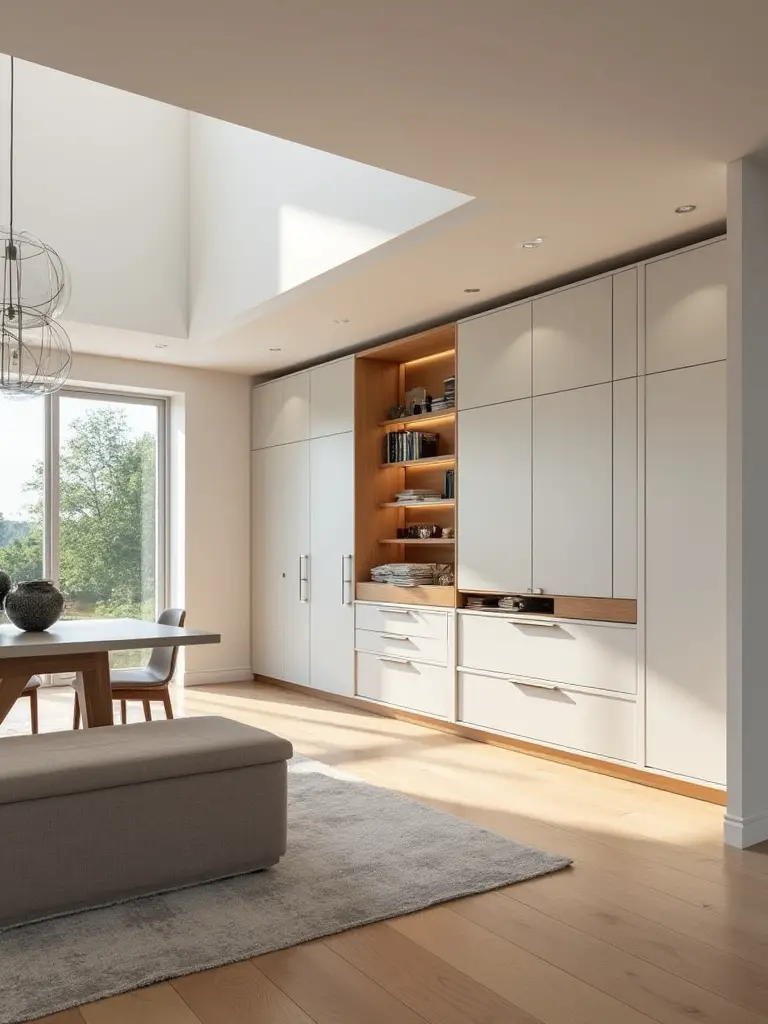
This is another area where you can save a ton of money. A simple, inexpensive unit from a big-box store can look a million times better with new hardware. Swap out the boring silver knobs for some cool brass handles or leather pulls. It’s a 10-minute, $20 upgrade that makes a huge difference. You’re looking for furniture that works hard but looks good doing it.
Next up: We’ve got the pieces; now let’s arrange them so we can actually move around.
10. Plan Your Layout for Seamless Movement & Accessibility
Remember that painter’s tape trick? We’re bringing it back. The flow of a room is everything. You need to create clear, easy paths from the kitchen to the table, and around the table to the chairs. I once visited a friend’s house where you had to do this awkward side-shuffle to get past the table to reach the kitchen. It immediately made the whole space feel cramped and stressful.
Your goal is to make movement feel effortless. Make sure chairs can be pulled out without hitting a wall or another piece of furniture. That 36-inch rule is your golden ticket. It ensures that even when people are seated, there’s still room for someone to walk behind them without asking everyone to “suck in.” This isn’t just about looking good; it’s about making the room feel gracious and welcoming.
Crafting Modern Ambiance with Strategic Lighting
If furniture is the body of the room, lighting is the soul. This is the single most powerful tool you have to change the entire mood of a space. Bad lighting can make the most expensive furniture look cheap, while great lighting can make a budget-friendly room feel like a high-end restaurant. And please, for the love of all that is good, get rid of that single, sad “boob light” in the center of the ceiling. We can do so much better.
11. Choose a Rug to Define and Ground the Dining Space
We touched on this for open-concept spaces, but a rug is a hero even in a room with four walls. It grounds the furniture, so your table and chairs don’t look like they’re just floating in space. It also adds a crucial layer of softness and texture, which is so important in modern design that can sometimes feel a bit cold. Plus, it’s a great way to dampen sound, so you won’t hear every single scrape of a chair on your hard floors.
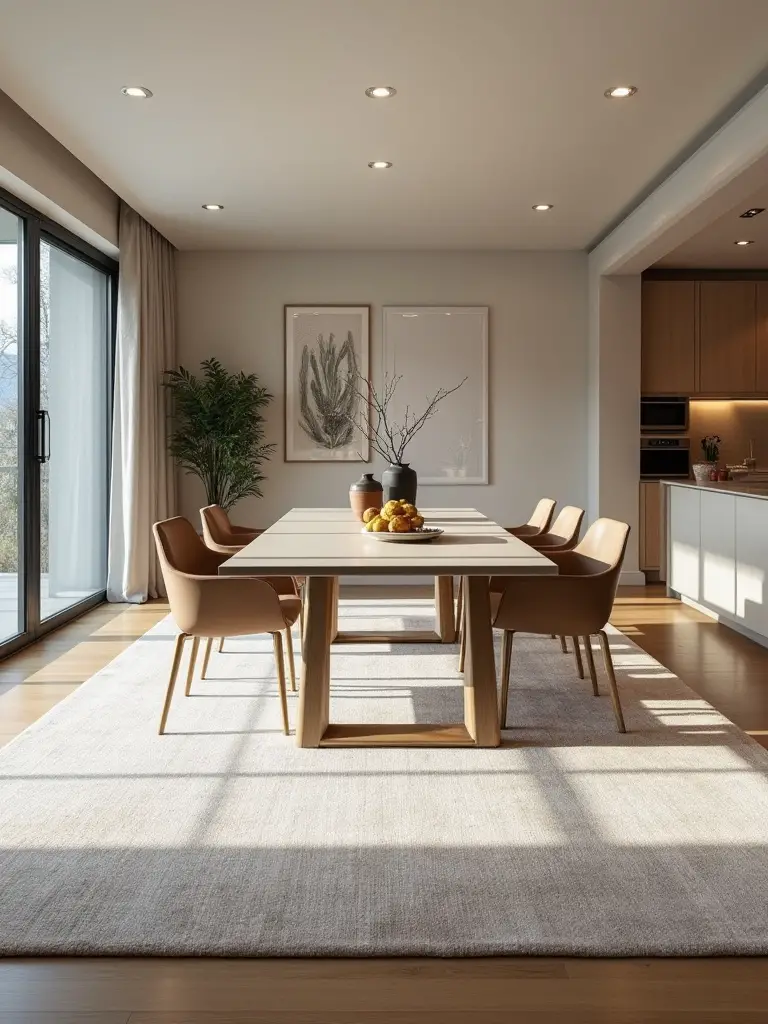
The biggest mistake people make is buying a rug that’s too small. All four legs of a chair should still be on the rug, even when it’s pulled out from the table. When in doubt, go for the bigger size. And choose a low-pile, easy-to-clean material. Performance fabrics or even stylish indoor/outdoor rugs are a godsend, especially if kids are in the picture.
Next up: Let’s move beyond the rug and get the light itself right.
12. Master Layered Lighting for Dynamic Ambiance Control
Every designer will tell you this, and it’s true: you need at least three Layers of Light. Don’t worry, it’s simple.

- Ambient (Overall) Light: This is the general light that fills the room. It could be recessed lights or a simple flush mount. It’s the “I need to find my keys” light.
- Task Light: This is focused light for doing a specific job—in our case, eating! This is your pendant or chandelier hanging over the table.
- Accent Light: This is the fun, dramatic light. A small lamp on your sideboard, a light pointed at a piece of art, or even just some candles. It creates mood and visual interest.
You wouldn’t do your makeup with just one harsh overhead light, right? It’s the same principle. Layering your lighting gives the room depth and allows you to create different vibes for different situations—bright for homework, soft and moody for a dinner party.
Next up: Let’s focus on that all-important Task Light.
13. Install a Signature Pendant Light as a Captivating Focal Point
The light fixture over your dining table is the jewelry of the room. It’s a chance to make a real statement. This single piece can set the tone for the entire space, whether it’s a dramatic, sculptural chandelier or a simple, minimalist linear pendant. The right fixture doesn’t just provide light; it’s a piece of functional art.
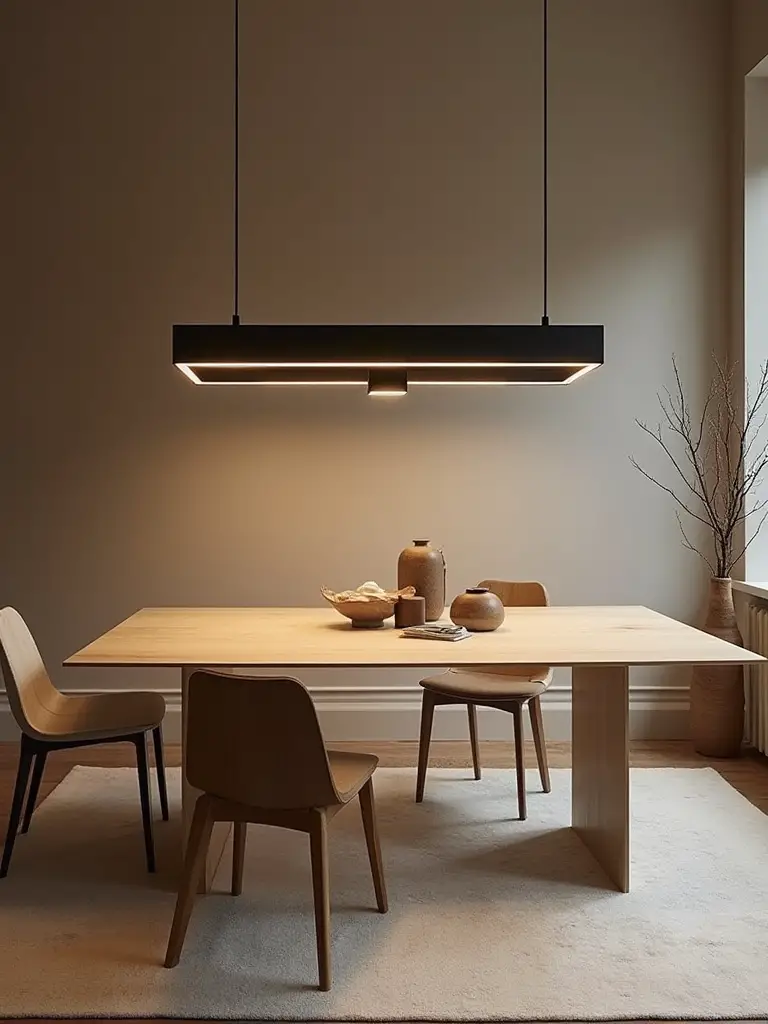
Getting the height right is crucial. You want it to be low enough to feel connected to the table and create intimacy, but not so low that you’re bumping your head or blocking your view of the person across from you. The general rule is to hang it so the bottom of the fixture is about 30-36 inches above the tabletop. This is the piece that will make your friends say, “Wow, where did you get that?”
Next up: Let’s add in those smaller, smarter lights that make a huge difference.
14. Add Integrated Task Lighting for Functional Brilliance
This sounds fancy, but it just means adding small, useful lights where you need them. If you have a sideboard where you mix drinks or serve food from, a small, stylish table lamp is a game-changer. It creates a warm little pool of light and makes the whole area feel more inviting and intentional.
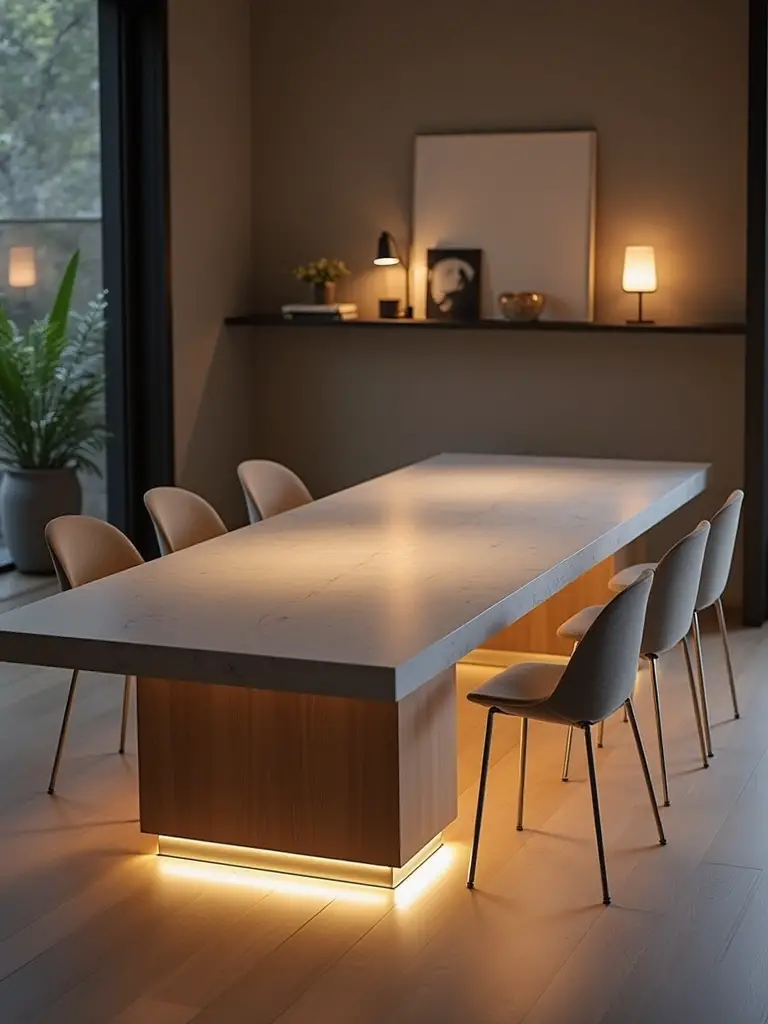
You could also use battery-powered “puck lights” under the shelves of a hutch or bookcase to highlight your favorite dishes or glassware. It’s these little thoughtful touches that elevate a room from just “decorated” to “designed.” They show that you’ve thought about how you’ll actually use the space in every little way.
Next up: Now for the magic trick that brings it all together.
15. Utilize Dimmers for Effortless Mood Transformation
If you only take one piece of advice from this entire article, let it be this: put everything on a dimmer. Everything. It is the single cheapest and most impactful upgrade you can make to a room. Full stop. It gives you complete control over the mood. Bright and energetic for a family breakfast? No problem. Low and romantic for a date night in? Just slide that dimmer down.
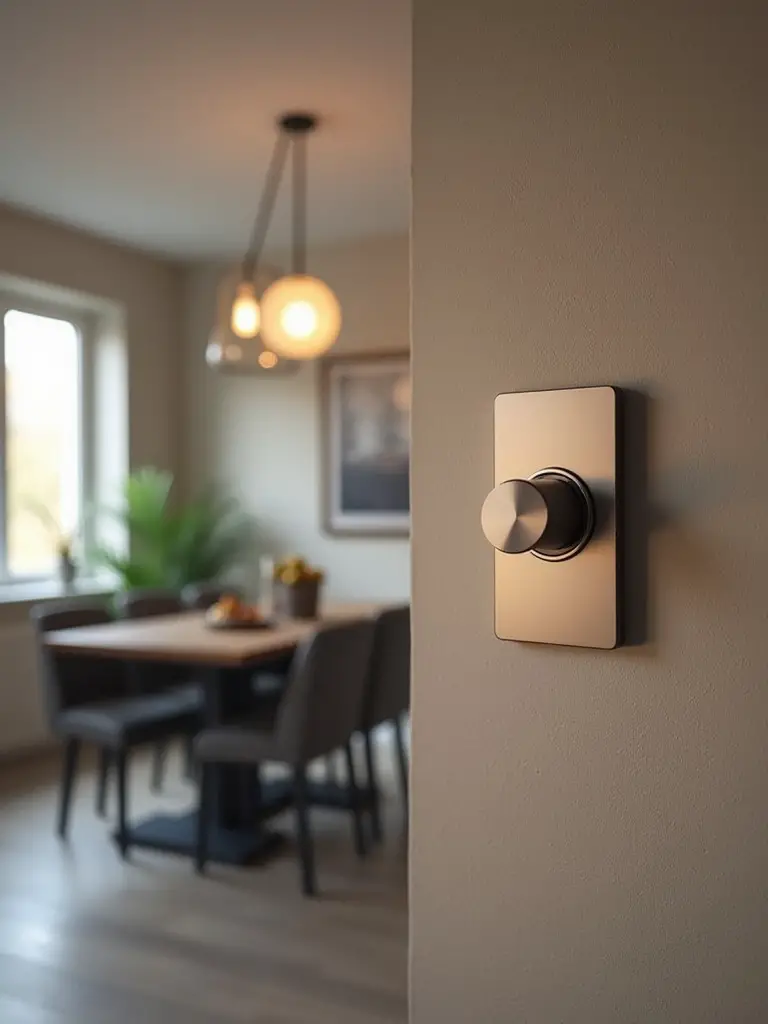
Installing a dimmer switch is a relatively simple job for a handy DIY-er or a quick and inexpensive one for an electrician. The ability to control the intensity of your light is a luxury that costs very little but pays off every single day. There is absolutely no reason for a dining room light to only have two settings: “off” and “interrogation room bright.”
Elevating Style with Materials, Accents & Finishing Touches
We’ve got the plan, the furniture, and the lighting. We’re in the home stretch! This is the part where we add the final layers of personality. These are the little details that will make the room feel uniquely yours. It’s like adding the perfect accessories to a great outfit—they complete the look and show off your Personal style.
16. Introduce Mixed Materials for Rich Visual Texture
A room with only one texture can feel really flat and boring. Think about it: a smooth wood table, smooth wood chairs, on a smooth wood floor—it’s a recipe for a snoozefest. The magic happens when you start mixing materials. Pair that smooth wood table with soft, upholstered chairs. Add in the cool sleekness of a metal light fixture and the nubby texture of a linen tablecloth.
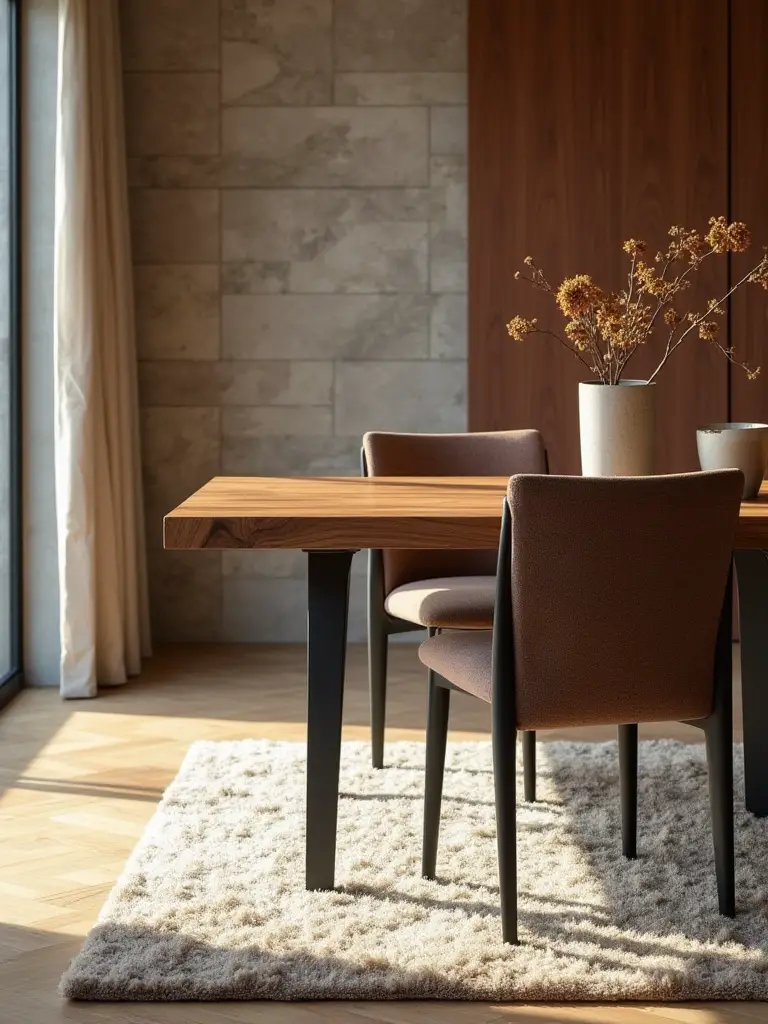
These different surfaces—wood, metal, glass, fabric, stone, plants—create a rich visual conversation. They catch the light in different ways and invite you to touch them. It’s this play of textures that gives a modern room its warmth and character without needing a lot of clutter or decoration.
Next up: Let’s add some life to the room—literally.
17. Integrate Biophilic Elements with Greenery for Serenity
You need to get a plant. Seriously, just one. A room without anything living in it can feel a bit sterile and sad. Plants add an organic shape, a pop of natural color, and literally breathe life into your space. They don’t have to be fussy, high-maintenance divas, either. A nearly-indestructible Snake Plant in a cool pot in the corner can do wonders.
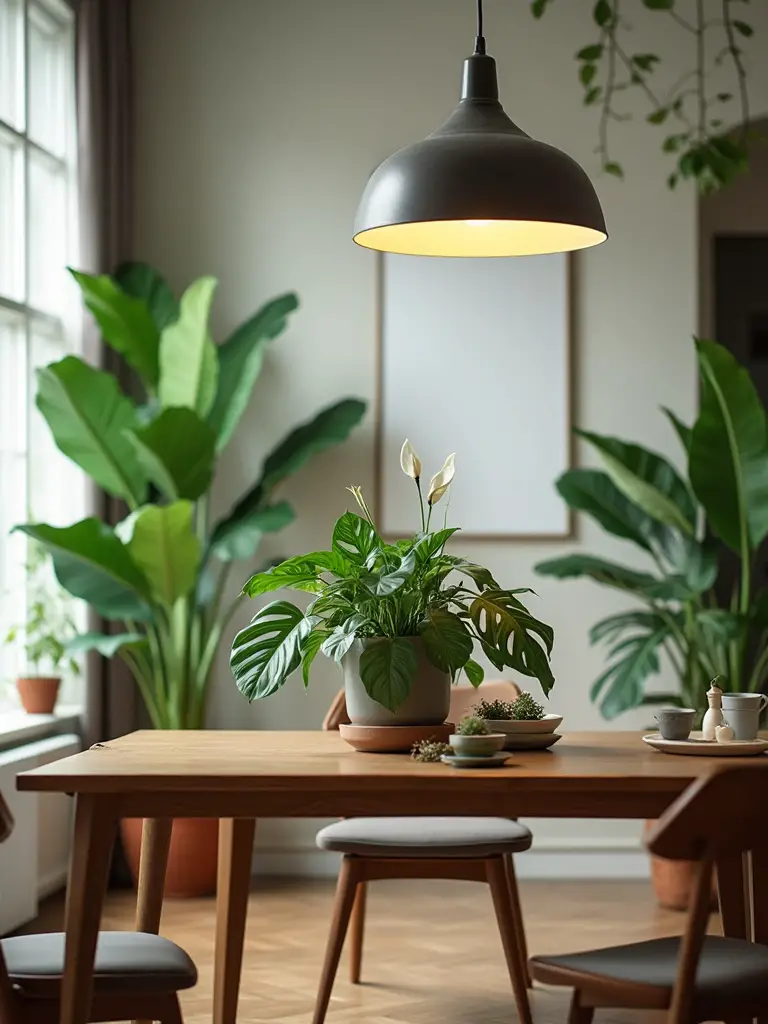
If you don’t have a green thumb, there are so many realistic-looking faux plants available now that you’d have to touch them to know they’re not real. A few simple stems in a vase on the sideboard or a small potted plant as a centerpiece can instantly make your dining room feel calmer, fresher, and more complete.
Next up: Time for the part that truly shows off your personality.
18. Select Striking Modern Art or Sculptural Decor
As a former art teacher, this one is close to my heart. Your walls are a blank canvas—use them! You do not need to spend a fortune to have beautiful art. One large, dramatic piece can have way more impact than a bunch of small, dinky frames. Check out sites like Etsy or Society6 for affordable prints from independent artists, or even try making your own abstract piece.

Art is what makes a house a home. It’s a reflection of you. It could be a giant framed photo you took on vacation, a collection of vintage posters, or even a series of your kids’ drawings in sleek, matching frames. Whatever it is, make sure it’s something you love to look at. A blank wall is a missed opportunity.
Next up: Now for the little things that sit on our surfaces.
19. Accessorize with Intentional, minimalist pieces
The key to modern accessorizing is “less is more.” Resist the urge to fill every empty surface. Instead, be intentional. That beautiful sideboard doesn’t need ten little trinkets on it. It needs one gorgeous vase, a stack of two or three art books, and a cool candle. Done. This is called creating a “vignette,” and the secret is to group items in odd numbers (like 1, 3, or 5) and vary their height.

Let your surfaces breathe. That “negative space” is just as important as the objects themselves. It gives the eye a place to rest and makes the few items you do have on display feel more special and important. Your goal is a curated, gallery-like feel, not a cluttered souvenir shop.
Next up: Our final, and perhaps most practical, tip for a room that lasts.
20. Ensure Easy Maintenance for Enduring Modern Appeal
Let’s end on a super practical note. A dining room that’s a pain to clean will never feel relaxing. If you’re constantly stressed about someone spilling wine on the upholstery or scratching the tabletop, you won’t be able to enjoy the space. When you’re shopping, think about durability. Performance fabrics are amazing for chairs because spills literally bead up on the surface. Tabletops made of materials like quartz or sintered stone are practically bulletproof.

A room that’s easy to live in is a room you’ll love for a long time. Simple furniture designs without a lot of nooks and crannies are easier to dust. A good-quality rug is easier to vacuum. Making smart, practical choices from the beginning means you can spend more time enjoying your beautiful dining room and less time maintaining it.
Your Dream Dining Room Awaits
Whew, we made it! Creating a modern dining room isn’t about following a rigid set of rules. It’s about being thoughtful. It’s about blending beautiful design with the messy reality of everyday life. It’s a process of layering—starting with a solid plan, adding in functional furniture, bathing it all in beautiful light, and finally, sprinkling in the Personal Touches that make it yours.
Don’t feel like you have to do all 20 of these things overnight. Pick one or two to start with. Maybe this weekend you just focus on finding the perfect pendant light, or maybe you finally declutter that sideboard. This is your journey, and every small, intentional choice you make will get you one step closer to a dining room you’re not just proud of, but one you absolutely love to live in. Now go on, you’ve got this.
